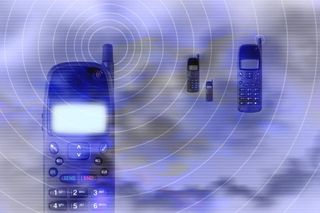
Ask GR Anything is a weekly Q%26A column that answers questions submitted by readers (as well as questions we're particularly curious about ourselves). Got a burning question about games or the industry? Ask us in the comments below and you may just get it answered!
As we continue to stalwartly defy the dozens (no seriously, dozens) of requests to tackle the inner workings of Pokeballs in this column, we come to a great question from ForestFire55. He asks, "How do wireless controllers work? Also, if they work without a wire, why can’t it charge wirelessly?" One question at a time, jeez. We’ll deal with the first part today - the second is actually worth its own column at some point, as the workings of wireless power are awesome (in a very complicated, tough to explain kind of way.)

Above:The basic idea of a controller is unchanged, but they've slowly grown with complexity every generation
At its most basic level, a controller is a device which translates a person's brain impulses into a language that computers can understand. It's basically a common language that both your brain and the computer can speak. Most people can't understand game code, and most computers can't interpret brain waves. So a brain translates its desire for Mario to jump into "press A" and the computer translates "pressed A" into "MSMQQueueInfo.FormatName = "DIRECT=OS:" & wszComputerName & "\SYSTEM$;JOURNAL". (Note: that's just an example of complicated computery code-ish type thing, not an actual command that would happen if you pressed A.)
First, the basics. All around you, everywhere you go, you are surrounded by an enormously complex web of waves wiggling in the electromagnetic spectrum. Light is a good example. It's a wave that has a frequency (how fast it wiggles) that our eyes are attuned to see. But there are many other frequencies. Billions. Need proof? Go find a radio and turn it on next to you. You'll be able to tune it to many different channels that are playing music, ranting about politics etc. What that shows you is the signal was in the room the entire time. All of them, from Rush Limbaugh to Howard Stern are in your room/office/basement right now (and inside your body, if you want to feel gross about Rush Limbaugh being inside of you.)

Above: A wireless device emits radio waves in all directions simultaneously
The nice thing about these kinds of waves is that two signals operating at different frequencies don't interfere with each other. You can play radio station 86.5FM (86.5 megahertz) and 78.4FM (78.4 megahertz) while operating your microwave (heats things with radio waves that wiggle at a special frequency, 2.5 gigahertz, which is absorbed by water and fat for reasons that aren't pertinent to this conversation) and your Xbox 360 controller (2.4 gigahertz) without any interference. Almost all consumer electronics use the 2.4 gigahertz frequency. Why? Because the government says so - don’t ask questions.
Waves are weird. It's just something you'll have to accept, because they're very tough to wrap your head around. For the purposes of this article, you can think of the process a bit like Morse code, but about two billion times faster. The wireless controller emits waves (in all directions) and the console picks up the properties of that wave (sticking with the Morse code idea, think dot, dash, or space.) It's a code that allows the console to figure out what you're trying to do.
Enough about waves, though. Let's get back to controllers. The controller's processor is monitoring the state of the buttons at all times when it's powered on. When you push a button, you're completing a circuit in the controller which changes the information being sent to the processor. The processor then sends that information to the console and Mario jumps.

Above:Thousands of years of technology went into making this moment possible. Even more if you're playing on a wireless Wiimote
The complexity continues to grow though, because now we have controllers that actually receive information from the console instead of just sending it out. Small motors in the grips of your X360 controllers create rumble at appropriate times after receiving instructions from the console. Headsets plugged into the controller can send and receive sound and voice.
So the quick and easy answer is that a wireless controller works like a complicated walkie-talkie, sending information back and forth via the 2.4 gigahertz radio wave frequency. We'll tackle the wireless power part of this question soon.
(Note: The Xbox 360 controller has Microsoft's own proprietary technology inside that helps alleviate some of the delay experienced by other wireless devices. Timing is too crucial in gaming so even a millisecond delay is often unacceptable.)
Submit your own questions in the comments (or Tweet them to @sciencegroen) and we may tackle them for a future Ask GR Anything.
